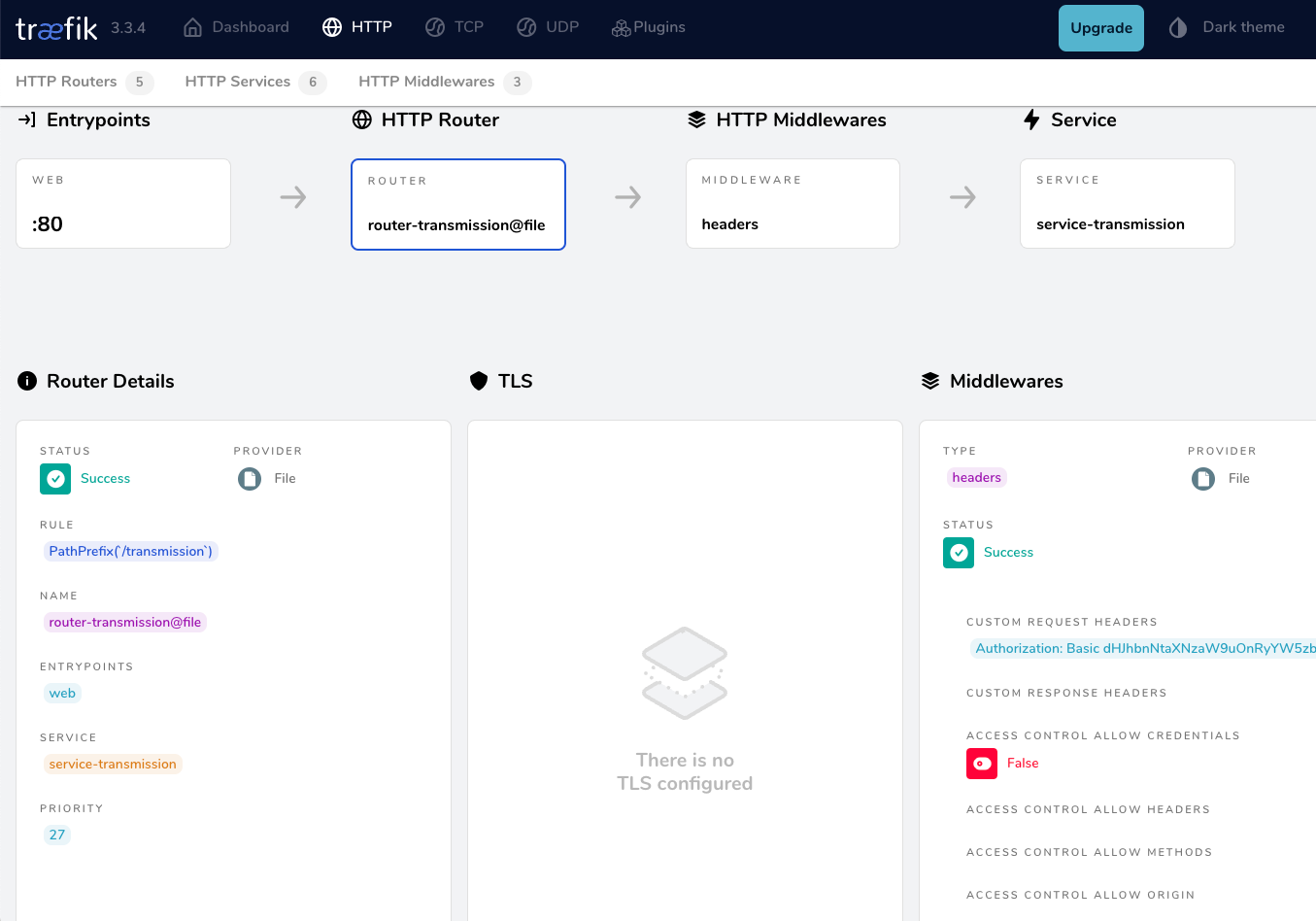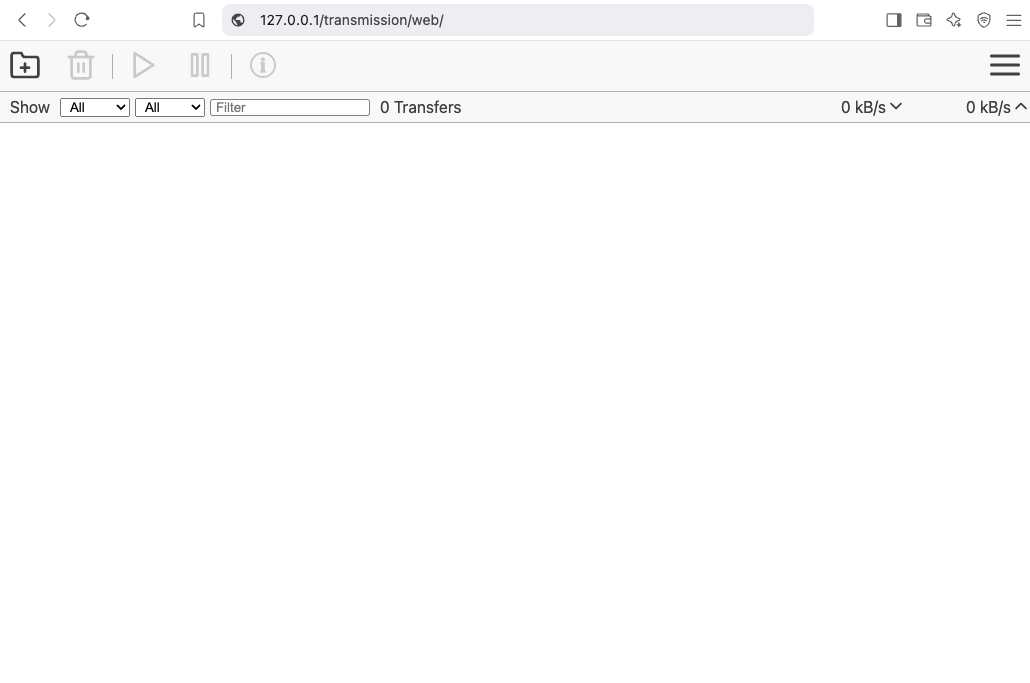a blog post series to my homelab

check here for Introduction to Traefik - Part Two
Part Three
In this blog post series, I will connect several docker containers and a virtual machine behind the Traefik reverse proxy on my homelab, and set up Let’s Encrypt for TLS.
In this article, I will try to connect a virtual machine to the Traefik reverse proxy. In Linux, Docker containers and virtual machines (VMs) run on different networks due to the way their networking is set up. To enable communication between Docker containers and VMs, we need to configure somekind of network bridging, port forwarding, or use a common network interface that allows them to communicate with each other. To simplify the setup, I will try to put Traefik docker container to a common network with the virtual machine.
Disclaimer: This homelab is intended for testing and learning purposes, as are the services we’ll explore. Make sure it fits your needs; I’m not suggesting you copy/paste everything here as-is. In the end, I may decide to delete this homelab and create a new one! But for now, let’s enjoy this journey together. Thank you!
I’ve also made a short video to accompany this blog post:
Virtual Machine
I use Qemu/KVM (kernel virtual machine) in my home lab. I also use terraform with libvirtd to automate my entire setup. That said, this post is not about that !
For the purpose of this article, I created an ubuntu 24.04 LTS running transmission service. It’s IP is: 192.168.122.79 and listens to TCP Port: 9091. Transmission also has configured with a Basic Auth authentication mechanism which username and password are the defaults: transmission:transmission.
Setup diagram
something similar to the below scheme
┌────┐
│ │
│ │ 192.168.122.x:9091
│ │
┌────┐ │ │ ┌───────┐
│ │ │ │ │ │
│ │ ─────────► │ ├───────►│ │
┌─└────┘─┐ │ │ │ │
└────────┘ │ │ └───────┘
192.168.1.3 │ │ VM
│ │
│ │ ┌──┐┌──┐
│ ├───────►│ ││ │whoami
└────┘ └──┘└──┘ 172.19.0.x
┌──┐┌──┐
Traefik │ ││ │
└──┘└──┘
docker
containersTraefik Network Mode
By default the network mode in docker compose is bridge mode which isolates the docker containers from the host. In the bridge mode our docker containers can communicate with each other directly.
But we need to either bridge our VM network (192.168.122.x/24) to the 172.19.0.x/24 network, or—what seems easier to me—change Traefik’s network mode from bridge to host.
In docker compose yaml file, in traefik service we need to make two changes:
first add the host network mode:
# Very important in order to access the VM
network_mode: host
and by using host we can now remove any port declaration
remove:
ports:
# The Web UI (enabled by --api.insecure=true)
- 8080:8080
# The HTTP port
- 80:80
so our docker-compose.yml now looks like:
---
services:
traefik:
image: traefik:v3.3
container_name: traefik
hostname: traefik
env_file:
- path: ./.env
required: true
restart: unless-stopped
volumes:
- ./traefik:/etc/traefik
- /var/run/docker.sock:/var/run/docker.sock:ro
# Add health check
healthcheck:
test: curl -s --fail http://127.0.0.1:8080/ping
interval: 30s
retries: 3
timeout: 10s
start_period: 10s
# Very important in order to access the VM
network_mode: host
# A container that exposes an API to show its IP address
whoami:
image: traefik/whoami
container_name: whoami
hostname: whoami
depends_on:
- traefik
labels:
- "traefik.enable=true" # To enable whoami to Traefik
- "traefik.http.routers.whoami.rule=Host(`whoami.localhost`)" # Declare the host rule for this service
- "traefik.http.routers.whoami.entrypoints=web" # Declare the EntryPoint
Start services:
docker compose up -dTest whoami
let us test now if whoami service works
curl -H Host:whoami.localhost http://127.0.0.1output:
Hostname: whoami
IP: 127.0.0.1
IP: ::1
IP: 172.19.0.2
RemoteAddr: 172.19.0.1:43968
GET / HTTP/1.1
Host: whoami.localhost
User-Agent: curl/8.12.1
Accept: */*
Accept-Encoding: gzip
X-Forwarded-For: 127.0.0.1
X-Forwarded-Host: whoami.localhost
X-Forwarded-Port: 80
X-Forwarded-Proto: http
X-Forwarded-Server: traefik
X-Real-Ip: 127.0.0.1okay, seems it works are before.
Transmission
as mentioned above, our transmission application runs on the virtual machine. It is protected by a Basic Authentication setup and listens on a TCP port.
Let’s test the connection:
curl 192.168.122.79:9091result is:
<h1>401: Unauthorized</h1>To add Basic Auth to curl is simple:
curl -u transmission:transmission 192.168.122.79:9091now the output is:
<h1>301: Moved Permanently</h1>we can add -v to see more details:
curl -v -u transmission:transmission 192.168.122.79:9091full output:
* Trying 192.168.122.79:9091...
* Connected to 192.168.122.79 (192.168.122.79) port 9091
* using HTTP/1.x
* Server auth using Basic with user 'transmission'
> GET / HTTP/1.1
> Host: 192.168.122.79:9091
> Authorization: Basic dHJhbnNtaXNzaW9uOnRyYW5zbWlzc2lvbg==
> User-Agent: curl/8.12.1
> Accept: */*
>
* Request completely sent off
< HTTP/1.1 301 Moved Permanently
< Server: Transmission
< Access-Control-Allow-Origin: *
< Location: /transmission/web/
< Date: Thu, 27 Feb 2025 15:47:02 GMT
< Content-Length: 31
< Content-Type: text/html; charset=ISO-8859-1
<
* Connection #0 to host 192.168.122.79 left intact
<h1>301: Moved Permanently</h1>The Location section is interesting: Location: /transmission/web/
Authorization header
by looking very careful the above output, we see that curl uses the Authorization header for Basic Auth.
This is interesting and we can use this.
Let’s try the command:
curl -H "Authorization: Basic dHJhbnNtaXNzaW9uOnRyYW5zbWlzc2lvbg==" http://192.168.122.79:9091/output:
<h1>301: Moved Permanently</h1>okay !
So, another way to access transmission is via Authorization header. Curl sends the credentials through base64 encoding, which can be reproduced by
echo -n "transmission:transmission" | base64and we verify the output:
dHJhbnNtaXNzaW9uOnRyYW5zbWlzc2lvbg==Traefik file provider
For the purpose of this lab, we want to access the application on the VM from localhost without providing any credentials, with Traefik handling everything.
┌─────────┐
http://localhost/transmission/ ---> | Traefik | --> VM (IP:PORT + Basic Auth)/transmision/
└─────────┘To do that, we need to introduce a PathPrefix Rule to Traefik so it redirects every request for /transmission to the VM. And what a better place to introduce the file provider on our static Traefik configuration
# Enable file provider
file:
directory: /etc/traefik/dynamic/
watch: trueunder our docker provider.
so the entire traefik/traefik.yml should look like:
# The /ping health-check URL
ping: {
}
# API and dashboard configuration
api:
insecure: true
# Debug log
log:
filePath: /etc/traefik/traefik.log
level: DEBUG
# Enable EntryPoints
entryPoints:
web:
address: ":80"
reusePort: true
# Providers
providers:
# Enable docker provider
docker:
exposedByDefault: false
# Enable file provider
file:
directory: /etc/traefik/dynamic/
watch: true
Dynamic Directory
I am sure you have already noticed that we also have introduced a new directory under our Traefik folder and instructed Traefik to watch it. This is extremely useful because Traefik will automatically reload any configuration in that folder without the need to restart (stop/start or down/up) the Traefik service.
As this change is on static configuration, we need to stop/start the services:
docker compose downCreate the dynamic directory:
mkdir -pv ./traefik/dynamic/
ls -la ./traefik/dynamic/
and
docker compose up -dTraefik Design
To help you understand how traefik works,
HTTP HTTP
┌───────────┐ ┌──────┐ ┌──────────┐ ┌───────┐
│ │ │ │ │ │ │ │
│EntryPoints│ ───► │Routes│──►│Middleware│──►│Service│
│ │ │ │ │ │ │ │
└───────────┘ └──────┘ └──────────┘ └───────┘We have alredy explained EntryPoints on our previous article, so we are going to focus on routers, middlewares and services.
Traefik Services
To avoid any complicated explanation, the Traefik Service is the final destination of an HTTP request.
For our example, should look like the below config. Please be aware, the <service name> is a placeholder for later.
http:
services:
<service-name>:
loadBalancer:
servers:
- url: 'http://192.168.122.79:9091'Traefik Middlewares
As we already mentioned above, we need to send login credentials to transmission. Be aware <middleware name> is a place holder for later.
http:
middlewares:
<middlewar-name>:
headers:
customRequestHeaders:
Authorization: "Basic dHJhbnNtaXNzaW9uOnRyYW5zbWlzc2lvbg=="
Traefik Routes
Traefik HTTP Routes are part of Traefik’s dynamic configuration and define how HTTP requests are handled and routed to the correct services.
Which means the routers is the component that connects everything (EntryPoint, Middleware, and Service) together. This is also where we add our PathPrefix rule for the Transmission location.
Be aware <router|service|middleware name> is a place holder for later.
eg.
http:
routers:
<router-name>>:
entryPoints: web
service: <service-name>
rule: PathPrefix(`/transmission`)
middlewares:
- <middleware-name>>
Traefik dynamic configuration
We are ready to pull things together.
Create a file named transmission yaml under the dynamic configuration directory:
./traefik/dynamic/transmission.yml
http:
middlewares:
middleware-transmission:
headers:
customRequestHeaders:
Authorization: "Basic dHJhbnNtaXNzaW9uOnRyYW5zbWlzc2lvbg=="
routers:
router-transmission:
entryPoints: web
service: service-transmission
rule: PathPrefix(`/transmission`)
middlewares:
- middleware-transmission
services:
service-transmission:
loadBalancer:
servers:
- url: 'http://192.168.122.79:9091'
NO need to restart our services with dynamic configuration!
Test Traefik new transmission route
from command line
curl localhost/transmission/output:
<h1>301: Moved Permanently</h1>from dashboard

from browser

That’s It !!
docker compose down
